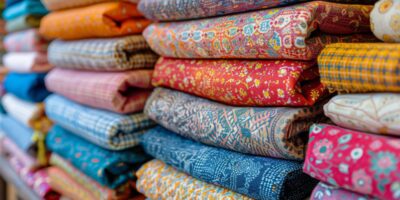In a world where fast fashion dominates the market, a quiet revolution is underway, focusing on the revival of traditional textiles through modern entrepreneurship. This movement is not just about preserving old craft techniques but is also a strategic endeavor to reintegrate these artisanal crafts into contemporary fashion and decor. This article explores how entrepreneurs are breathing new life into traditional textiles, the challenges they face, the impact on local communities, and the global market’s reception of these culturally rich products.
The Value of Traditional Textiles
Traditional textiles are a repository of cultural history, artisanal skills, and unique aesthetic values. From the intricate ikat fabrics of Central Asia to the vibrant kente cloth of West Africa, each piece tells a story of community, culture, and craftsmanship. These textiles are not just materials but represent a heritage crafted over centuries, often passed down through generations.
Modern Entrepreneurship in Traditional Textiles
Entrepreneurs today are recognizing the potential of these traditional crafts and are finding innovative ways to bring them to new markets. Here’s how they are transforming the industry:
Incorporating Traditional Techniques into Modern Designs: Modern entrepreneurs are collaborating with artisans to create products that combine traditional craftsmanship with contemporary aesthetics. This approach helps make traditional textiles appealing to modern consumers, who are looking for unique, story-rich products.
Sustainable Business Models: Many of these entrepreneurial ventures focus on sustainability. They use natural dyes, organic materials, and ethical labor practices, appealing to the growing market of environmentally and socially conscious consumers.
Technology Integration: By using e-commerce platforms, social media, and digital marketing, entrepreneurs can reach a global audience, significantly expanding their market beyond local boundaries. Some also use advanced tools like 3D printing to experiment with traditional patterns in new forms, further bridging the gap between old and new.
Challenges in Reviving Traditional Textiles
Despite the enthusiasm, entrepreneurs face numerous challenges in reviving and sustaining traditional textiles:
Economic Viability: One of the primary challenges is making traditional craft economically viable. Artisanal products require significant time and skill, which can drive up costs, making it difficult to compete with mass-produced goods.
Skill Attrition: As older artisans retire, there is a risk that these skills may not be passed down, leading to the extinction of certain crafts. Entrepreneurs must find ways to attract younger generations to take up these traditional crafts as viable career paths.
Cultural Sensitivity and Appropriation: Entrepreneurs must navigate the fine line between cultural appreciation and cultural appropriation. It’s essential to engage respectfully and knowledgeably with the cultures from which these textiles originate, often involving communities in the business process and ensuring they benefit from the use of their traditional crafts.
Impact on Local Communities
The revival of traditional textiles can have a profound impact on local communities:
Economic Empowerment: By providing a market for traditional crafts, these entrepreneurial ventures help create jobs and sustain local economies. Artisans can receive a fair wage and a new sense of pride in their work.
Cultural Preservation: These efforts also help preserve cultural heritage, ensuring that traditional skills and knowledge are kept alive and passed on to future generations.
Women’s Empowerment: Since many traditional textile crafts are predominantly practiced by women, these ventures help empower women, giving them financial independence and a voice within their communities.
Global Reception
The global market’s reception to revived traditional textiles has been overwhelmingly positive. Consumers are increasingly looking for authentic, high-quality products with a story behind them. Moreover, in the fashion industry, there is a growing backlash against fast fashion, with consumers seeking out brands that offer sustainability and ethical production. Traditional textiles, with their rich histories and sustainable practices, fit perfectly into this niche.
Conclusion
The movement to revive traditional textiles through modern entrepreneurship represents a confluence of respect for heritage and innovative market strategies. It’s a testament to the enduring appeal of these crafts and the potential for traditional skills to adapt to modern economic landscapes. For entrepreneurs, the journey involves not just business acumen but a deep commitment to cultural stewardship and community development. As this sector grows, it not only preserves important aspects of human heritage but also paves the way for a more sustainable and ethically conscious global market.














